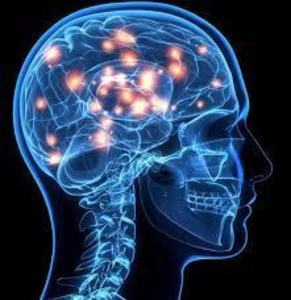Chronic pain is an extremely common problem, affecting about one third of Americans. Many different conditions can result in chronic pain, including headache, low back pain, cancer pain, arthritis pain, and nerve pain. In addition, in certain chronic pain conditions, there is an increased likelihood of suffering from additional painful conditions, such as with chronic fatigue syndrome, endometriosis, fibromyalgia, inflammatory bowel disease, interstitial cystitis, temporomandibular joint dysfunction, and vulvodynia. It is not well understood whether having certain pain conditions raise the risk of developing others, or whether conditions that commonly occur together share common risk factors.
In the short term, living with chronic pain is extremely challenging. It is not hard to imagine what the consequences would be of trying to function in daily life constantly feeling like your lower back was broken, or having your head hurt most or all of the time. The pain wears you down, and it makes you irritable and short-tempered. Most people start to restrict their activities because of pain, which leads to social isolation, which leads to depression. Small tasks become difficult, as it is hard to focus through pain. It is hard to sleep while in pain, which further wears you down.
In addition to being extremely difficult to deal with on a daily basis, chronic pain has multiple long term effects. Studies have found that pain causes both emotional and cognitive changes. Many studies have found that chronic pain increases the risk for depression and anxiety. This comes as no surprise, thinking about all of the difficulties a chronic pain patient faces. However, more surprising are the cognitive changes. Pain causes difficulties in concentrating, difficulties with memory, and impaired decision making.
How Does Chronic Pain Affect Your Brain?
These effects happen because chronic pain affects the brain chemistry, and changes the wiring of the nervous system. The brain is made up of two different types of tissue: grey matter and white matter. The grey matter contains the main bodies of the brain cells, and the white matter contains the parts of the cells that connect the different areas of the brain together (axons). The volume, or density of the grey matter, is positively associated with abilities and skills—in other words, the higher the volume of the grey matter, the better the abilities are. Different areas of the brain control different types of abilities and skills. The effects of changes in the white matter are somewhat more complex and less understood, but changes in this area can also affect functioning.
Studies of patients with various different types of chronic pain have shown that in these patients, there is a decrease in the volume of the grey matter in areas of the brain involved in pain processing and regulation, in mood regulation, and in cognition. In other words, in exactly the areas that have been observed to control the functions that have been found to be altered in chronic pain: depression and anxiety, and difficulties in concentrating, memory, and decision making. It is also well known that controlling pain becomes more difficult, the longer the pain has existed, and this is likely because the grey matter in areas of the brain involved in pain processing are actually decreased by the pain itself. Pain can become its own disease over time, to some extent independent of the original source of pain. Chronic pain is also associated with white matter abnormalities.
Treating Pain Early is Recommended in Theory, but Difficult in Practice
This is why many pain specialists state that it is very important to treat chronic pain as early as possible. In addition to the fact that pain becomes harder to treat over time, the longer you leave a person in pain without adequate treatment, the more suffering they will experience. However, treating pain early can be a challenge for many reasons. Many pain clinics have unmanageable waiting lists, and most primary care practitioners do not have the training required to treat pain effectively. And then on top of that, some of the pain conditions, especially those affecting women, have lengthy times to diagnosis, during which time the women are usually left suffering with untreated pain. Endometriosis, interstitial cystitis, and vulvodynia are examples of such diseases.
Yoga Can Help Decrease Chronic Pain
Despite the difficulty in getting medical help both for chronic pain itself and for the underlying diseases that cause it, if you are suffering with chronic pain, there is one activity that can help reduce the pain somewhat, and interestingly, it happens to have the exact opposite effect on the brain as chronic pain does: yoga. Although taking up yoga is no substitute for receiving effective medical care, many studies have shown its effectiveness in improving a wide variety of pain conditions. Performing a search of one common index of medical journal articles comes up with over 200 citations on yoga and chronic pain. It has been studied for lower back pain, neck pain, osteoarthritis, rheumatoid arthritis, fibromyalgia, chronic fatigue syndrome, and more, all with similar results .
Although the studies vary somewhat in the type of yoga used, most study gentle types of yoga such as Hatha yoga, with study participants taking one to two yoga classes per week. Levels of pain and ability to function are measured before starting the yoga classes, and are usually reassessed after two to three months of yoga. These studies find a significant decrease in pain, and increase in ability to function, after practicing yoga for a few months. In one study, yoga was found to be superior to a general exercise program.
Effects of Yoga on the Brain
The specific effects of yoga on the brain have been studied, and yoga was found to increase volume of the grey matter in areas involved in pain perception and modulation, focus and attention, body awareness, and emotional regulation. In addition, it increased the connectivity of the white matter in the brain. Amazingly, these are all areas that affected by chronic pain. If there could be a therapy tailor-made to reverse the effects of chronic pain, yoga would be it.
Chronic pain patients may be nervous about starting a therapy that will involve movement, and indeed studies have shown that patients who are fearful of movement are less likely to consider a pain treatment that requires it. However, the research also shows that movement therapies such as yoga are generally safe for chronic pain (but, always check with your own health care practitioners to make sure any new exercise program is right for you). There are many gentle types of yoga such as restorative yoga and yin yoga that do not require a lot of movement, and these may be good starting points. In addition, you can also find therapeutic yoga instructors, or instructors that will work one on one to personalize a program for you. In combination with traditional medical therapies, yoga may be a valuable tool to reduce pain in chronic pain patients, and to improve their quality of life.















